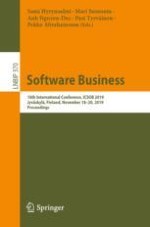This book constitutes the refereed proceedings of the 10th International Conference on Software Business, ICSOB 2019, held in Jyväskylä, Finland, in November 2019. On the occasion of its tenth anniversary the conference theme this year was “The First Decade and Beyond” and focused on the development during the past decade, addressing the future of software-intensive business as well as studies on new and emerging ideas.
The 18 full papers and 10 short papers presented together with 3 invited talks, 6 emerging research papers and a tutorial were carefully reviewed and selected from 52 submissions. They are organized in the following topical sections: software ecosystems; management of software products; continual improvement and product development; impacts of digitalization; software business education; software startups and digital business.
